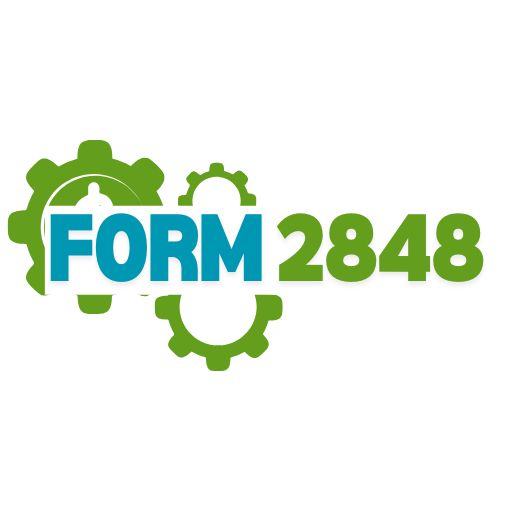The original design manufacturers, or ODMs, as well as the portions of the original equipment manufacturers, or OEMs, that act like ODMs in that they create custom machines for hyperscalers and cloud builders and sell that at high volume and low margin, have long since taken over the server market. They represent more than 50 percent of units and close to half the revenues.
But in the Ethernet switch market, the ODMs have less than a 20 percent share of revenues and probably a slightly higher share of port counts, which is arguably the best way to gauge switch shipments. However, the Ethernet switching ODMs are getting an increasing amount of business from the cloud builders and hyperscalers, and perhaps it will not be too long before Ethernet switching will look like X86 and Arm serving.
The market analysts at IDC let loose their latest Ethernet switch and router statistics just after The Next Platform settled down to a little holiday rest and relaxation, and as the new publishing year begins for us, we are circling back to take a look at what is going on in this important part of the IT sector and how it might be affected by the GenAI boom.
It is easy to blame any decline in any part of the datacenter market on a switch of focus from general purpose computing to AI workloads, and as we pointed out back in October when the Q2 2024 Ethernet numbers were out, in the aggregate across datacenter, campus, and edge use cases, the Ethernet switch market was in recession. And to be precise, that is two consecutive quarters of revenue decline. With Q3 2024, that makes three consecutive quarters of decline, although with only 7.9 percent shrinkage, the numbers are not as bad as they were in Q1 2024 and Q2 2024, which had 11.7 percent and 14.1 percent revenue declines, respectively.
The recession for Ethernet routers, which are largely sold to various kinds of service providers and sometimes to the cloud builders and hyperscalers, has been longer and much deeper, starting back in Q3 2023 and with percentage declines that are roughly twice as steep as those for Ethernet switching.

In the third quarter of last year, IDC reckons that the world bought $10.8 billion in Ethernet switches, down 7.9 percent from the year ago period, as we said. Ethernet routing drove just $3.1 billion in sales and declined by 17.4 percent over that time.
Back in the third quarter of 2022, IDC stopped giving out relative changes in sales and port counts for Ethernet switches by speed band, which makes us sad indeed. But it did talk a bit about the market for the 1 Gb/sec, 200 Gb/sec, and 400 Gb/sec devices that bracket the market. We don’t have enough data to confidently fill in the blanks, but because it is in our nature, we have attempted to fill in the blanks to get a send of port counts and the cost per bit shipped for the entire span of Ethernet devices.
The further we get from Q2 2022, the less confidence we have with this spreadsheet witchcraft. We really care about the high end of the market, which is comprised almost exclusively of datacenter switches, anyway. So we can still make some inferences of our own on your behalf.
IDC said in its report that combined sales of 200 Gb/sec and 400 Gb/sec Ethernet switches rose by 126.3 percent year on year and 23.8 percent sequentially from Q2 2024. In our model based on historical statements made by IDC about this upper echelon of networking, we think that the world may have consumed around $2.89 billion in Ethernet switches running at these high speeds.
We have no idea (yet) what sales of 800 Gb/sec Ethernet switches might be, but Creehan Research expects for the 800 Gb/sec ramp to be the fastest one in history and that this ramp began in earnest in the middle quarters of 2024. We will add this to our model as soon as we can. But just based on gut and the adoption of 800 Gb/sec switching for AI clusters, we think that sales of 800 Gb/sec devices already surpassed $1 billion in the third quarter, and ate into sales of 100 Gb/sec, 50 Gb/sec, and 10 Gb/sec devices sold into the campus.

On the other end of the spectrum, sales of 1 Gb/sec Ethernet switches fell by 25.6 percent year on year but rose sequentially by 11.5 percent, according to IDC. It is just hard to kill off these 1 Gb/sec devices. (We just bought an unmanaged 5-port Netgear Ethernet switch for the upgraded home network at Walmart for $27; the managed version cost $177 with eight ports. That a little more than $5 a port for unmanaged and $22 a port for managed. But here’s the funny bit. On average, across all sizes and configurations of 1 Gb/sec Ethernet switches sold, you are talking something on the order of $13 per Gb/sec of aggregate bandwidth. If you average across 200 Gb/sec and 400 Gb/sec devices across all shapes and sizes and assume a reasonable number of ports shipped, it is a little more than $1 per Gb/sec to buy these fat and fast devices.
Old networking gear is always more expensive on a price/performance basis, but it is always cheaper on a capital allocation basis. And even as time progresses, the relative gaps in price/performance banding persist. This same thing happens across server architectures across a similar kind of geologic datacenter time. Mainframes have been twice as expensive as RISC/Unix systems that have been twice as expensive as X86 systems that are 40 percent more expensive than Arm systems. . . . You get the idea.
Starting in 2021, IDC started breaking out datacenter Ethernet switch revenues and port shipments from stuff sold into the campus and out at the edge, and now it gives enough detail to track the relative revenues between these different classes of customers and use cases. The data for this bifurcation of the market – datacenter versus other – was backcast through 2020 and was very interesting.

In its report, IDC said that the datacenter part of the Ethernet switch market rose 6.2 percent sequentially and 18 percent year on year, and we do the math on the model we have built from the historical data provided by IDC in the past, that means that $5.53 billion in Ethernet switch gear was sold into datacenters in Q3 2024. Before the GenAI boom started in the summer of 2022, the Ethernet switch market was running at around $3 billion a quarter in early 2021 and kissed $4 billion by the summer of 2022. The difference between revenues then and revenues now is almost certainly driven by AI clusters requiring high speed networking.
IDC did not provide any specific breakout of AI network spending. With many tens of billions of dollars being spent on AI clusters each quarter, it is safe to say there is billions of dollars being spent on Ethernet networking, complementing the billions of dollars being spent on InfiniBand at Nvidia. (Nvidia is getting a slice of that Ethernet in AI clusters game, too.) It might not be too long before Nvidia shows up in the top five vendors in the quarterly Ethernet report. The GPU giant already has an Ethernet switch business that is bigger than that of Hewlett Packard Enterprise (which is in the middle of buying Juniper Networks) and will soon rival that of Huawei Technologies if current trends persist.

As you can see from the chart above, when you add up Ethernet switching across datacenter, campus, and edge, Cisco Systems is still the dominant peddler of gear. But this was a tough Q3 for the company as it was for others because a year ago switch makers were burning down orders they had on their books that they could not fulfil in prior quarters due to supply chain woes.
In the third quarter, Cisco’s Ethernet switch revenues were just a tad over $4 billion, down 24.4 percent year on year and up 13 percent sequentially. We estimate that Cisco did about $1.22 billion in datacenter switch sales – all Ethernet, of course. This would be the fifth quarter out of the past six that Arista Networks had a larger datacenter Ethernet switch business than Cisco, based on statements made by IDC in the past and our filling in the data gaps.
IDC said that Arista’s Ethernet switch revenues rose by 18 percent in the quarter and that 90.4 percent of its sales were in the datacenter, and that it had a 13.6 percent market share of overall Ethernet switching. That is $1.47 billion in revenues, with $1.32 billion from the datacenter (up 16.8 percent) if you do the math.

HPE, by contrast, had $571 million in Ethernet switch sales, and only $88 million came from datacenter products. Huawei had $1.05 billion in Ethernet switch sales, down 6.6 percent. The ODMs as a group had $1.07 billion in sales, up 55.7 percent and up 7.9 percent sequentially from Q2 2024.
Take away the ODMs, and all of the other vendors, including Nvidia and Juniper Networks and dozens of smaller firms that still make and sell switches, accounted for $2.6 billion in sales, up 7 percent year on year. Within those others was H3C, the standalone Chinese company that used to be half partnered by HPE, which posted $442 million in sales, down 7.1 percent.
At some point, just as is happening with servers, companies will need to start upgrading their front end networks as they build out fast AI back end networks, and the Ethernet recession will be over. It could take a quarter or two – and more certainty in the global economy – before we start to see that.


